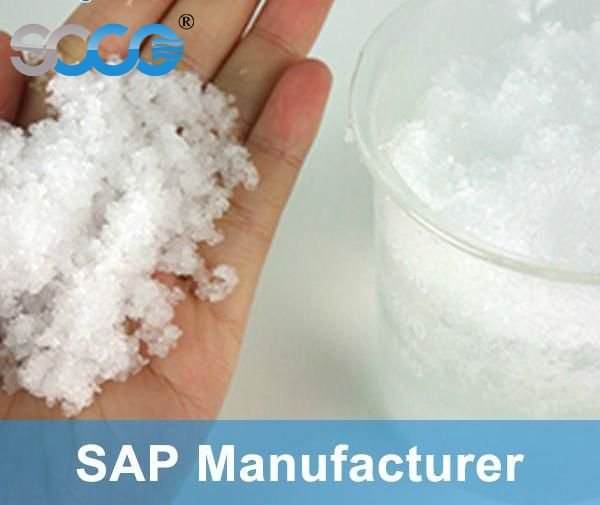Super absorbent polymers (SAPs) are specialized functional polymer materials renowned for their exceptional ability to absorb and retain large quantities of water. These polymers can absorb hundreds to thousands of times their own weight in water, earning them names such as super water-absorbing agents or high water-retaining agents.
Common Super Absorbent Materials
The primary super absorbent materials include sodium polyacrylate and potassium polyacrylate.

Sodium Polyacrylate
Sodium polyacrylate, with the chemical formula (C3H3NaO2)n, is a modern functional polymer material and a significant chemical product. It is available in both solid and liquid forms:
- Appearance: Solid sodium polyacrylate is white or light yellow in block or powder form, while the liquid form is a colorless or light yellow viscous liquid.
- Density: 1.32 g/mL at 25°C
- Storage Conditions: 2-8°C
- Form: Solid or liquid
- Proportion: 1.23
- pH Range for Discoloration of Acid-Base Indicator: 6-9
- Stability: Generally stable under most conditions
- EPA Chemical Substance Information: CAS Number 9003-04-7
- Chemical Properties: Tasteless, swells with water, and is easily soluble in aqueous caustic soda
Potassium Polyacrylate
Potassium polyacrylate, often referred to as a hydrogel polymer, is a polymer composed of potassium cations and acrylamide. It has a strong absorption capacity and is especially beneficial in agricultural applications.
- Functions and Benefits:
- Increase Water Retention in Soil: Enhances the soil’s ability to retain water.
- Reduce Irrigation Frequency: Significantly lowers the need for frequent irrigation.
- Minimize Water and Nutrient Loss: Reduces the leaching of water and nutrients.
- Decrease Evaporation Rate: Prevents moisture loss by reducing the rate of evaporation.
- Improve Soil Physical Properties: Enhances the physical structure of the soil.
- Boost Plant Performance: Especially beneficial in arid regions, improving plant growth and performance.
- Reduce Fertilizer Use: Helps in minimizing the quantity of fertilizer needed.
Both sodium and potassium polyacrylate are non-toxic, harmless, and non-polluting, making them environmentally friendly choices for various applications, particularly in agriculture.

